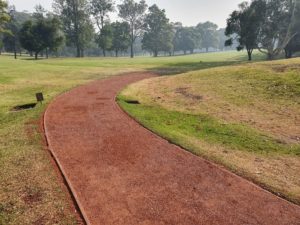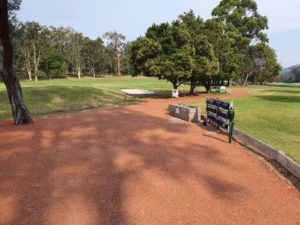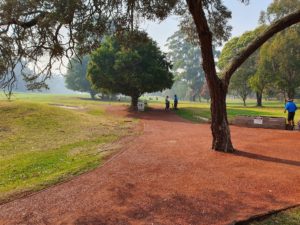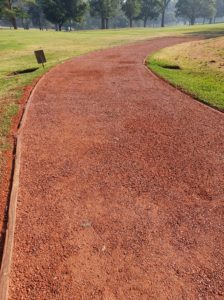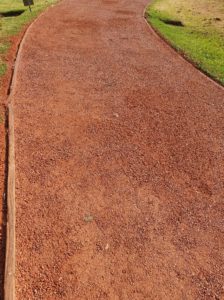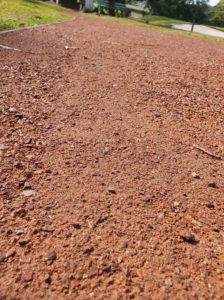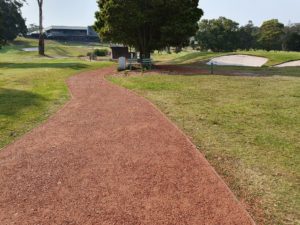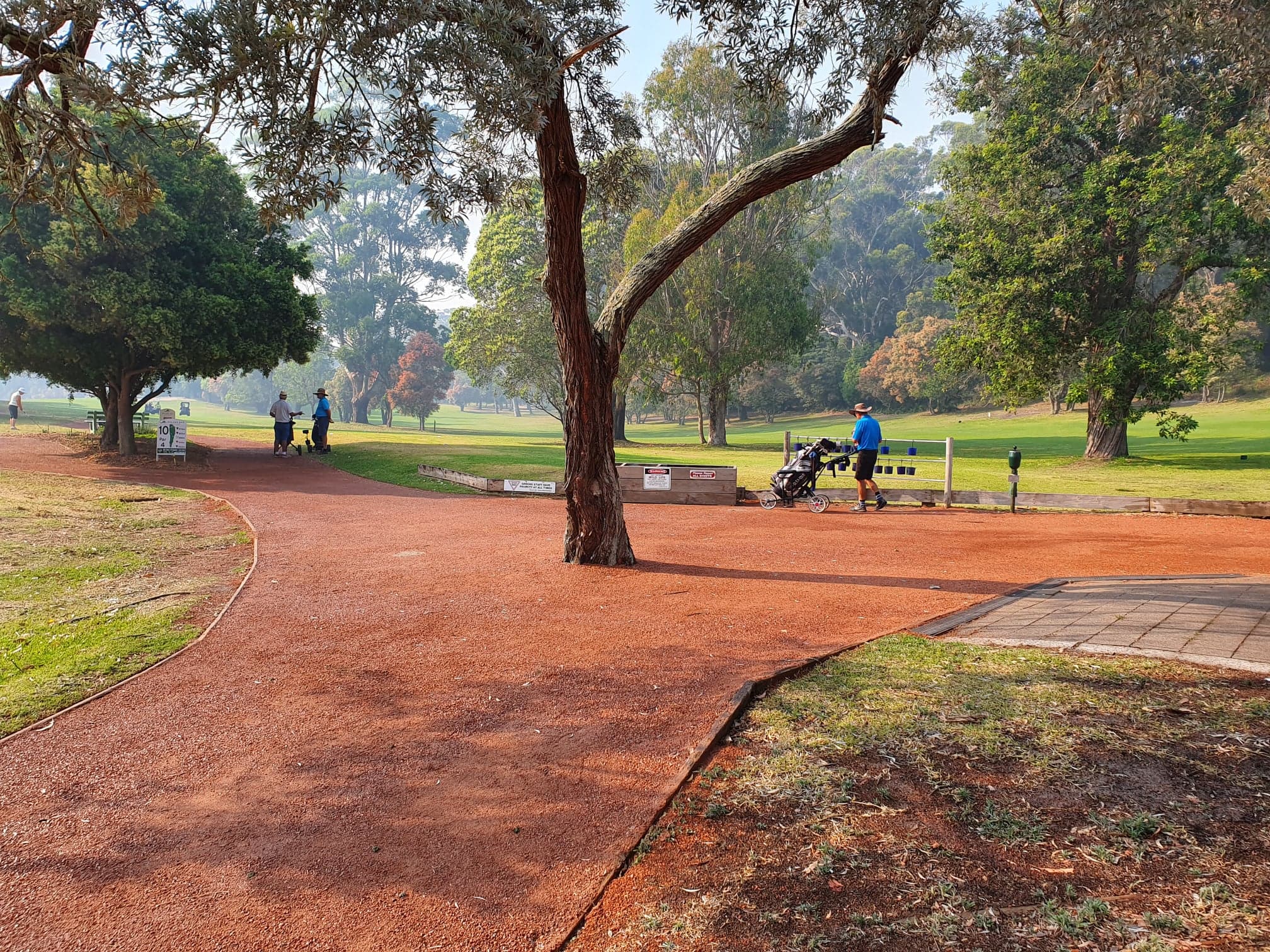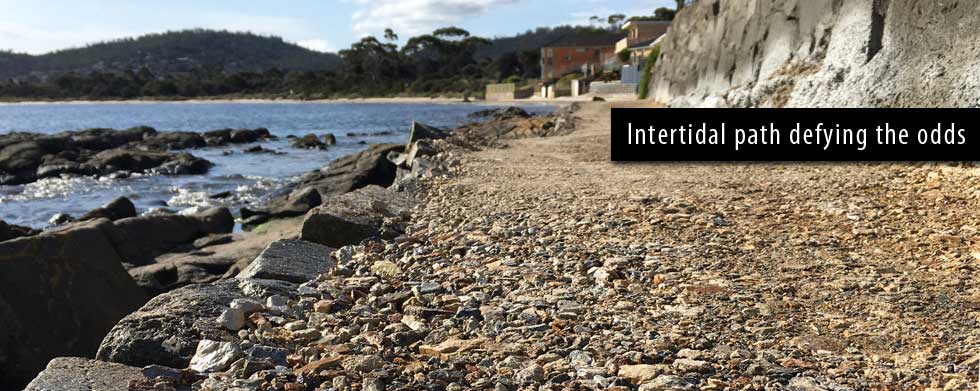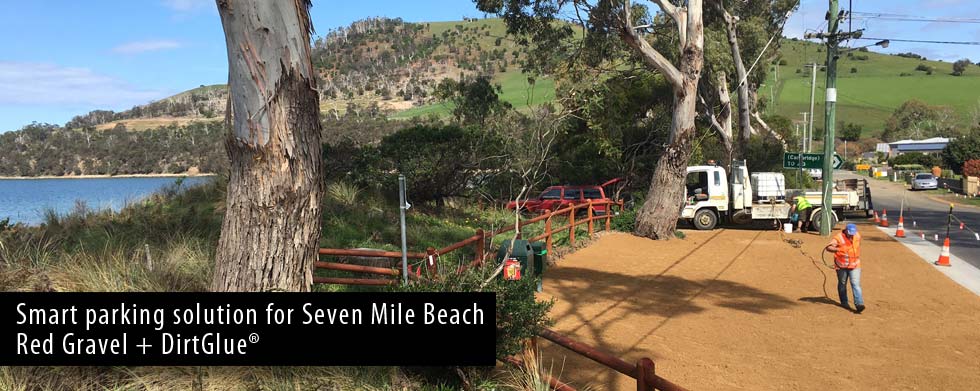From a distance, it looks like any normal red gravel car park. However, get up close, and you’ll discover that the gravel surface is solid, rock solid.
Project: Red gravel and DirtGlue® car park in Seven Mile Beach, Tasmania
Date: September 2016
Client: Clarence City Council
Background
There are numerous red gravel car parks along the coastal road at Seven Mile Beach, 15 minutes east of Hobart. Red gravel is an effective short term solution to surfacing these car parks – the gravel is easily available and relatively low cost. However, it has its shortcomings; the gravel quickly becomes displaced due to cars driving on it and bad weather. Typically the surface develops pot holes and when this occurs, the Council sends in a crew to reset the levels and lay more red gravel. Another major issue is the loose gravel from the car park gets washed into the drains and underground pipes. Over time, this causes significant problems for the drainage system.
Clarence Council approached us to see if DirtGlue® could provide a better long term solution for this car park’s maintenance strategy.
The Council wanted to steer away from concrete, bitumen and asphalt, as this was cost prohibitive and also not appropriate for the site.
For this scenario, using DirtGlue® Industrial was a great fit for the project – a long lasting sealed gravel surface, cost effective, environmentally safe and a natural finish that fitted in with the local environment.
Outcome
After the Council had prepared the base and laid the gravel it took just half a day for our GreenTrack contractor (D Howard Landscapes and Excavations) to apply the DirtGlue and roll the surface. The car park was closed to the public for just four days.
GreenTrack and DirtGlue® delivered exactly what was expected. This 230 square metre car park at Seven Mile Beach now has a sealed red gravel surface; it is rock hard and wearing well. From a distance it looks no different to the original red gravel car park, local residents may not have even noticed the change.
Inspecting the drains around the site, it can be seen that the drains being fed by water running off the car park are relatively gravel free. Whereas, other nearby drains are clogged with gravel washed in from red gravel paths along the road side.
